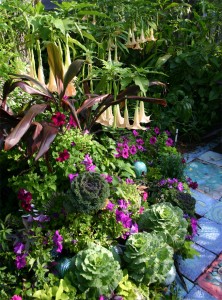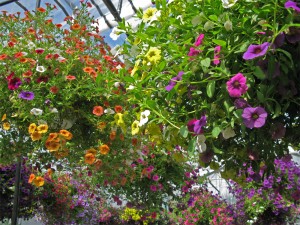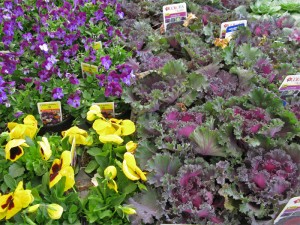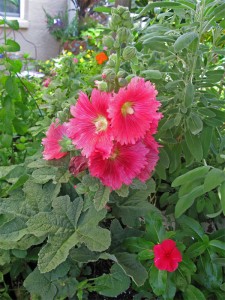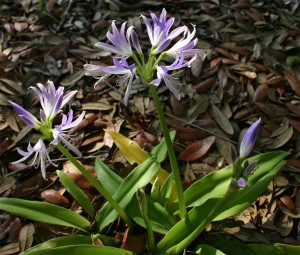February in Florida- It’s time to add veggies and color to your garden
The freeze this year has left many of our Florida gardens looking drab and depressing. It was best to wait out all of January to plant anything this year, due to our unusually cold days and nights. But now that we are into February, you can start dressing up your lackluster landscape by adding annuals and ornamental veggies.
One of the most important factors in the Florida garden is timing. When I moved to Florida from Buffalo years ago, I put in annuals three months late. I learned quickly, that by the end of May most annuals will start getting heat stress. So, start now and for the next three months you can enjoy a profusion of color, which will help take your mind off your damaged plants.
Save money by planting seeds.
* designates you can start by seed
Early February is the time to add plants that grow well when we have cool night temps (45-65°F):
Flowering annuals
You can either plant petunias and pansies in pots or in the ground which has been enriched with compost (I prefer mushroom compost). I have six hanging baskets close to my front door planted with purple petunias and pansies. To extend the interest and extend the season I added some nasturtium and zinnia seeds to these baskets.
- Ornamental cabbage and kale
- Petunias
- Pansies
- Snapdragons
Get a jump on planting these items by seed, wait until later in February if you are putting in plants:
- Marigolds
- Nasturtiums
- Zinnas
Bulbs
- African Lily (Agapanthus africanus)
- Amazon Lily (Eucharis grandiflora)
- Blood Lily (Haemanthus multiflorus)
- Caladium
- Crinum
- Dahlia
- Gladiolus
- Gloriosa Lily
- Kaffir Lily (Clivia)
- Tuberose
Vegetables
- Beets*
- Broccoli*
- Cabbage*
- Carrots*
- Cauliflower*
- Collards*
- Endive/ Escarole*
- Kale*
- Kohlrabi*
- Lettuce*
- Mustard Greens*
- Onions
- Peas*
- Potatoes
- Radish*
Late February is the time to add plants that grow well when nights start averaging around 65°F
Flowering annuals
- Ageratum
- Alyssum*
- Asters*
- Baby’s Breath
- Begonia (Wax, Nonstop and Tuberous)
- Browallia
- Dianthus
- Dusty Miller
- Gazania
- Geranium
- Hollyhocks
- Lobelia
- Marguerite Daisy
- Strawflower
- Verbena
- Canna
- Dahlia
- Zephyr Lily

